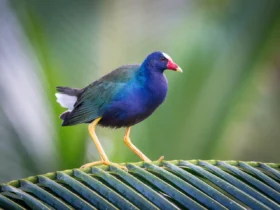In the cloud forests and highland landscapes of South America, a jewel-like creature flits among the foliage—the Amethyst-Throated Sunangel (Heliangelus amethysticollis). With its vibrant plumage, unique markings, and energetic behaviors, this sunangel species is a prized sight for birdwatchers, researchers, and nature enthusiasts. In this article, we delve into the world of the Amethyst-Throated Sunangel, exploring its characteristics, behaviors, habitat, and its significance within the intricate ecosystems of its mountainous homes.
Amethyst-Throated Sunangel images
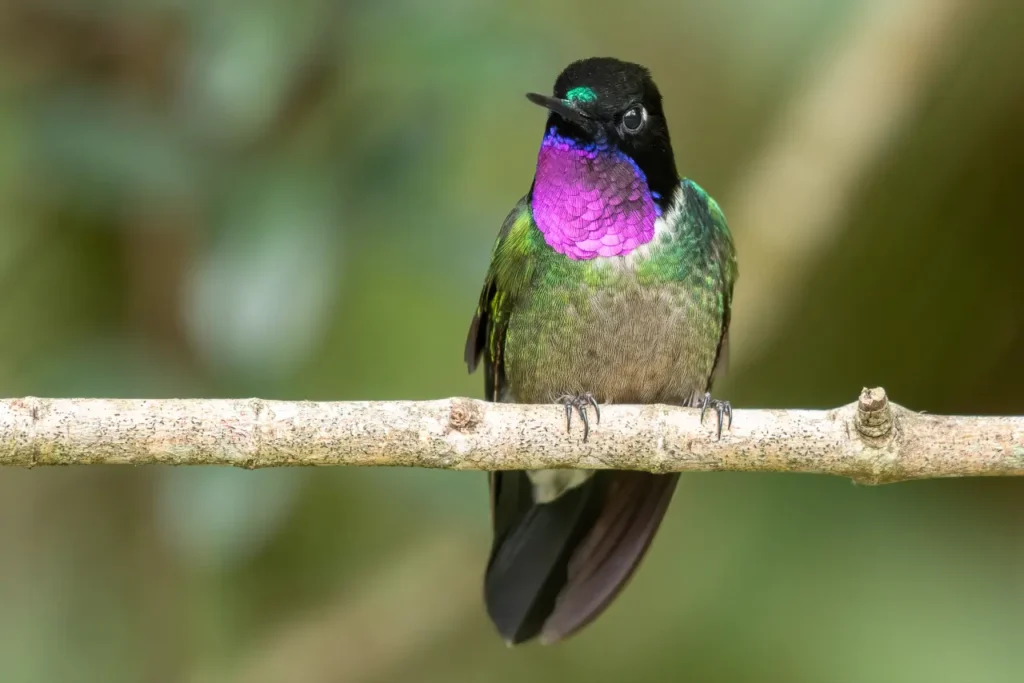
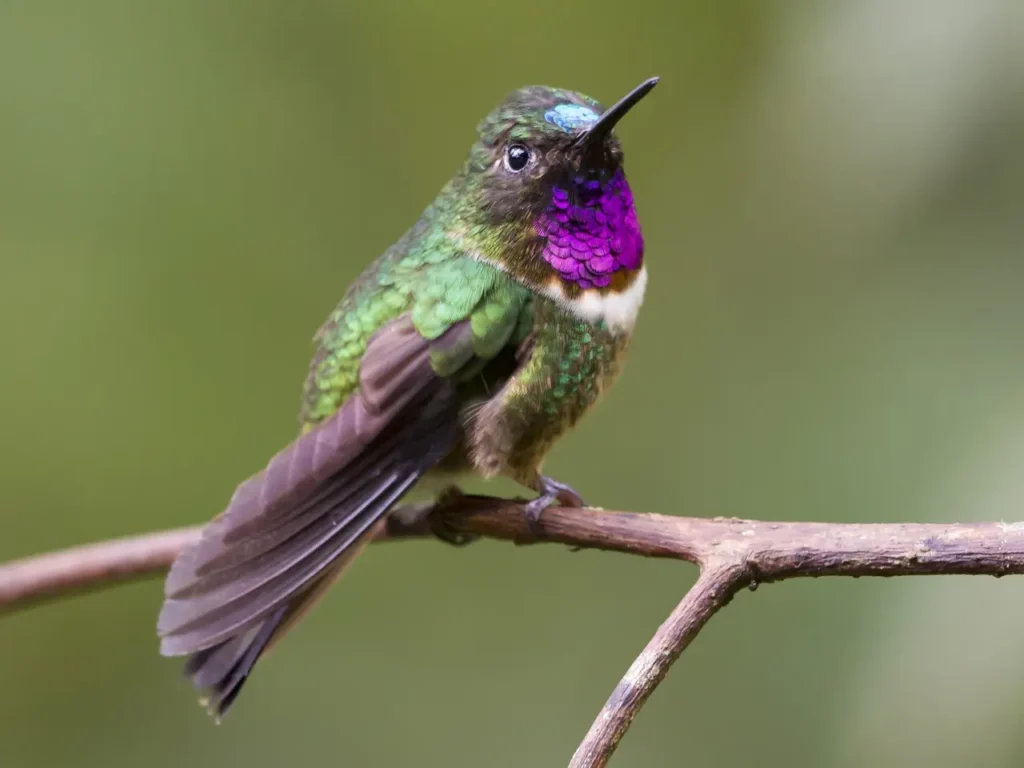
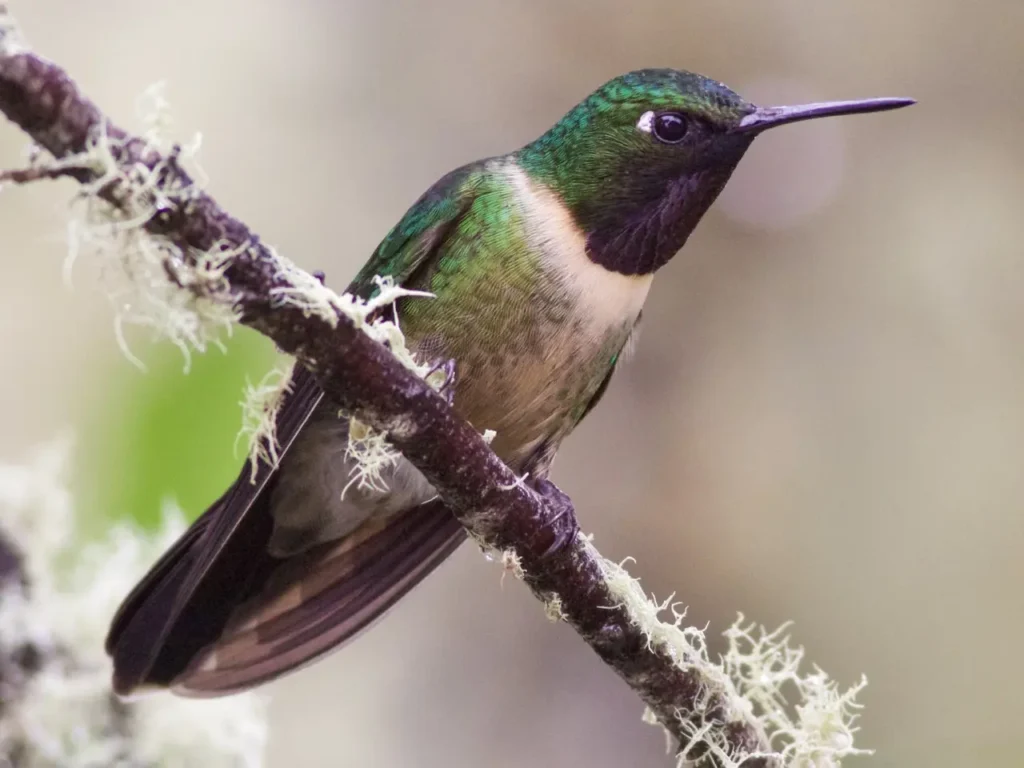
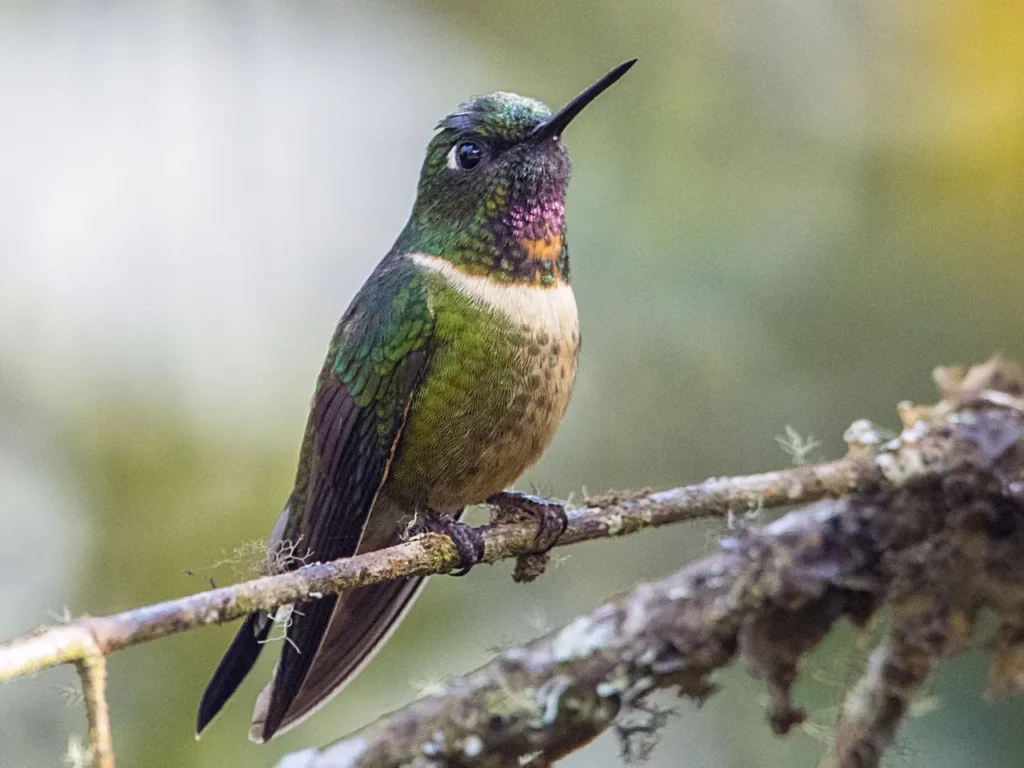
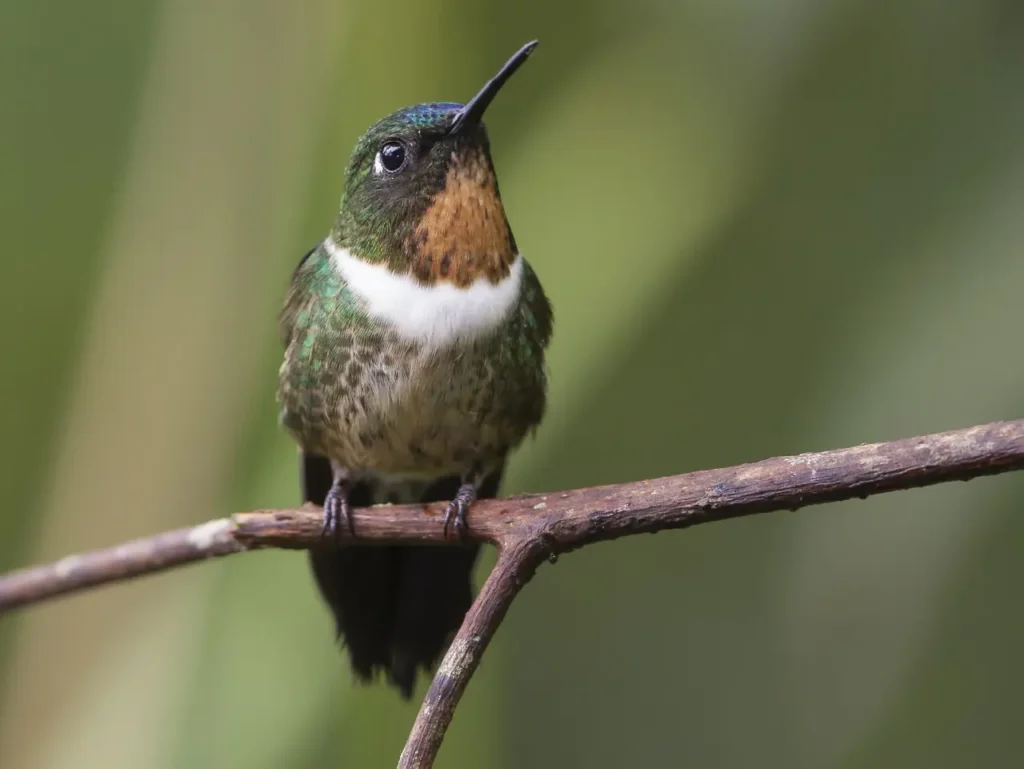
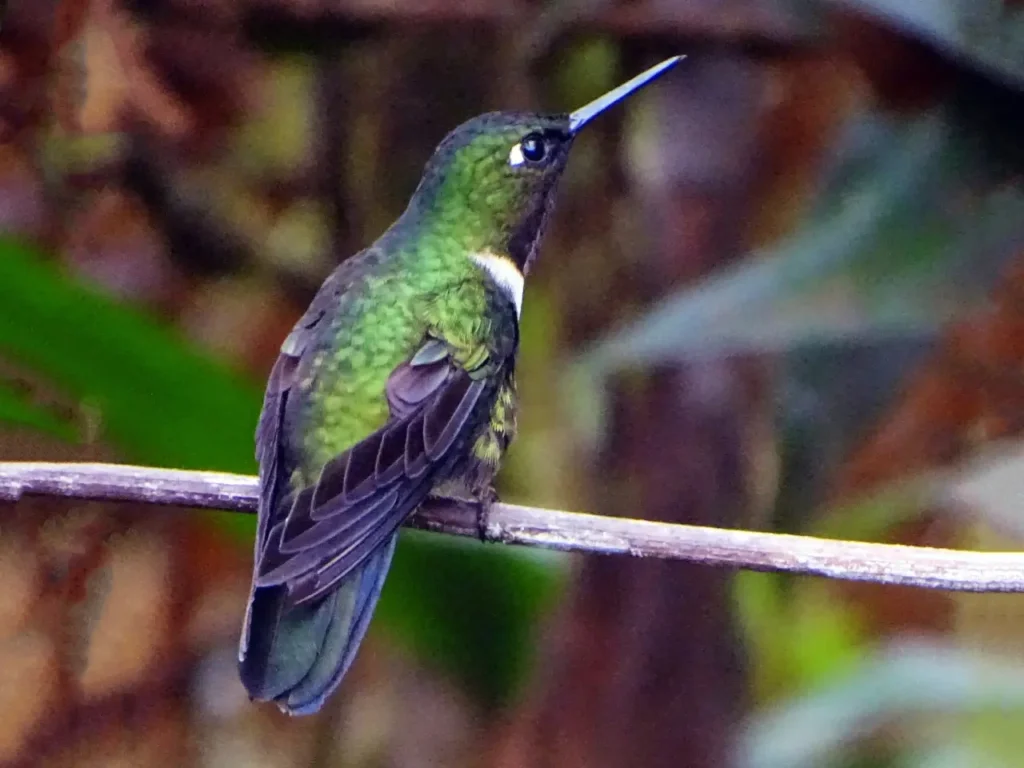
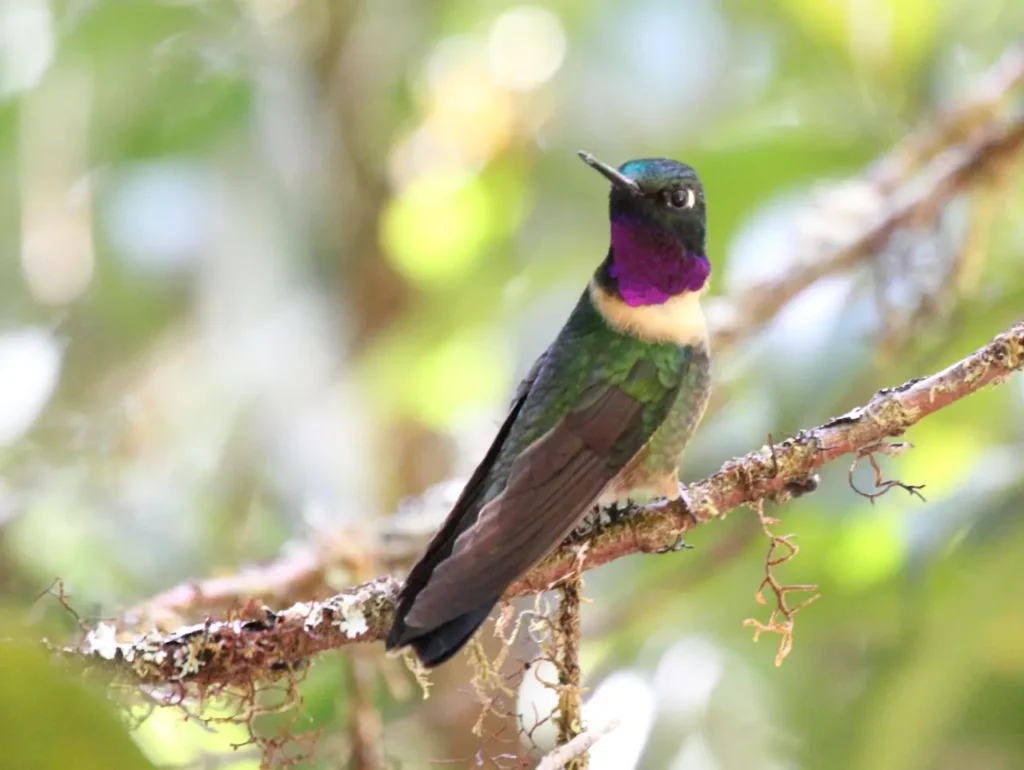
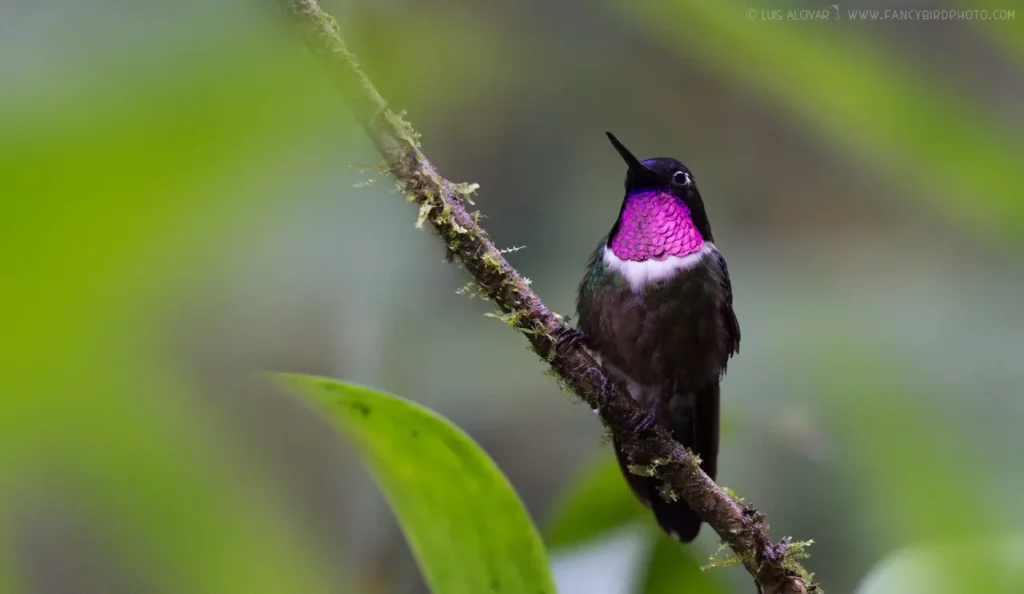
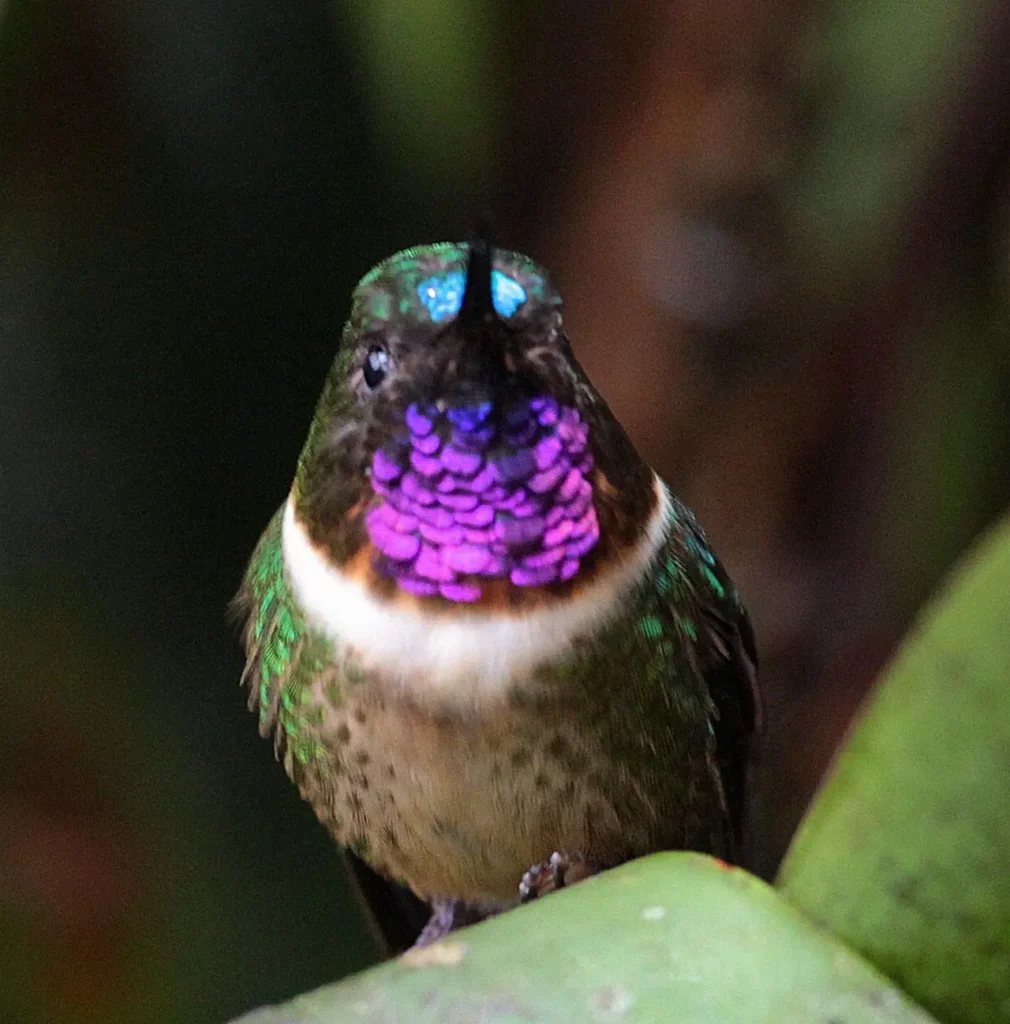
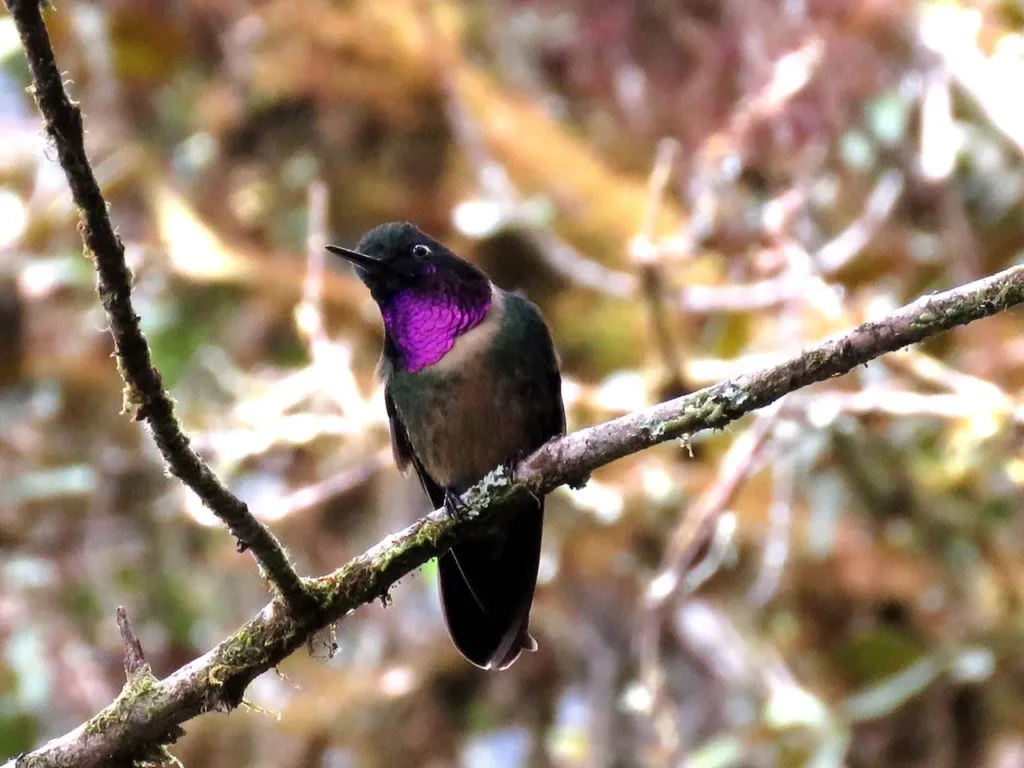
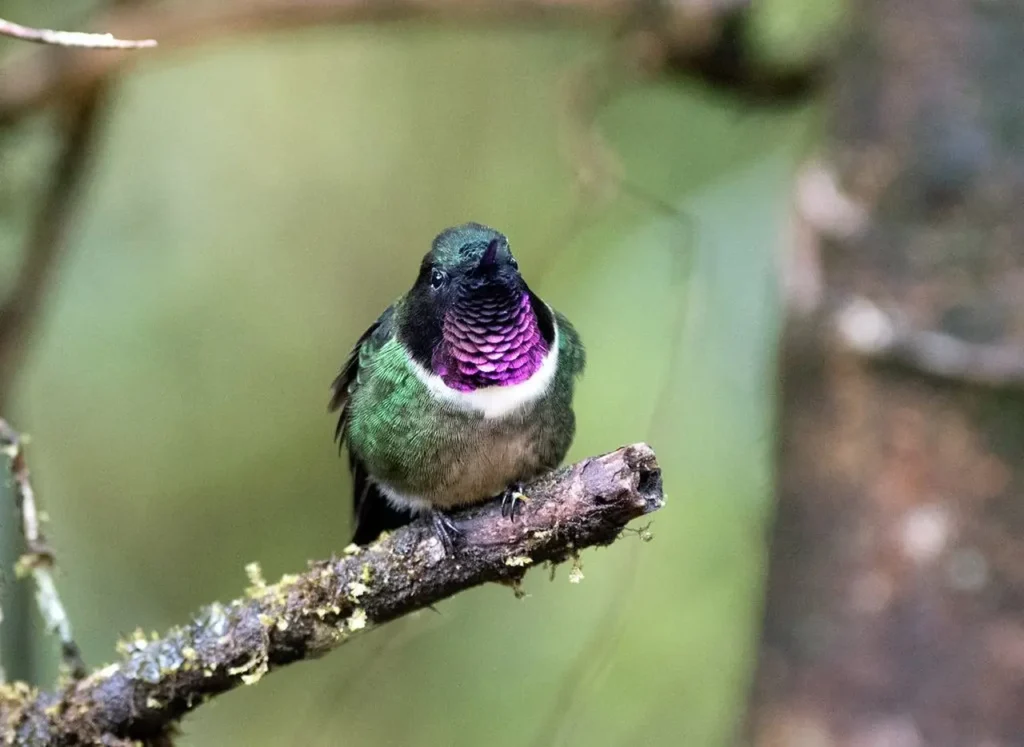
Appearance and Characteristics
The Amethyst-Throated Sunangel is a mesmerizing hummingbird known for its striking appearance. Its upperparts are a shimmering emerald green, while its underparts feature a mix of iridescent greens and blues. The most captivating feature is its namesake: the brilliant amethyst throat patch that shimmers like a precious gem when caught in the right light. This distinct coloration sets it apart from many other hummingbird species and adds to its allure.
Behavior and Feeding Habits
Sunangels, a group of hummingbirds native to South America, exhibit energetic behaviors while foraging for nectar and insects. The Amethyst-Throated Sunangel’s long, curved bill is perfectly suited for reaching into tubular flowers, allowing it to extract nectar with precision. These hummingbirds are also known for their acrobatic flight maneuvers, darting between flowers and foliage with agility.
Habitat and Range
The Amethyst-Throated Sunangel inhabits highland cloud forests and montane habitats across the Andes mountain range, from Venezuela to Bolivia. These habitats are characterized by their misty atmospheres, cool temperatures, and diverse array of plants adapted to this unique environment. These hummingbirds thrive in the lush understory of these forests, where they can find the nectar-rich blooms they depend on.
Role in Pollination
As nectar feeders, sunangels like the Amethyst-Throated play a crucial role in pollination within their ecosystems. Their foraging behaviors inadvertently transfer pollen from flower to flower, facilitating the reproduction of flowering plants. This essential service contributes to the maintenance of biodiversity and the health of these highland ecosystems.
Conservation and Challenges
While the Amethyst-Throated Sunangel is not currently considered globally threatened, it faces challenges due to habitat loss and degradation. The expansion of agriculture, deforestation, and climate change can impact the cloud forests it calls home. Conservation efforts that focus on preserving these unique montane habitats are vital for ensuring the long-term survival of this and other species.
The Amethyst-Throated Sunangel, with its resplendent plumage and role in pollination, exemplifies the delicate beauty and interdependence of highland ecosystems. Its presence serves as a reminder of the incredible diversity of life that thrives in the cloud forests of the Andes. By cherishing and safeguarding the habitats that sustain the Amethyst-Throated Sunangel, we contribute to the preservation of these breathtaking landscapes and the extraordinary species that call them home.
